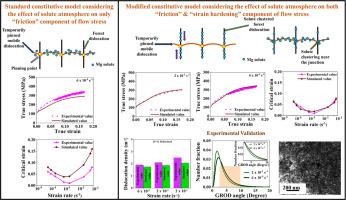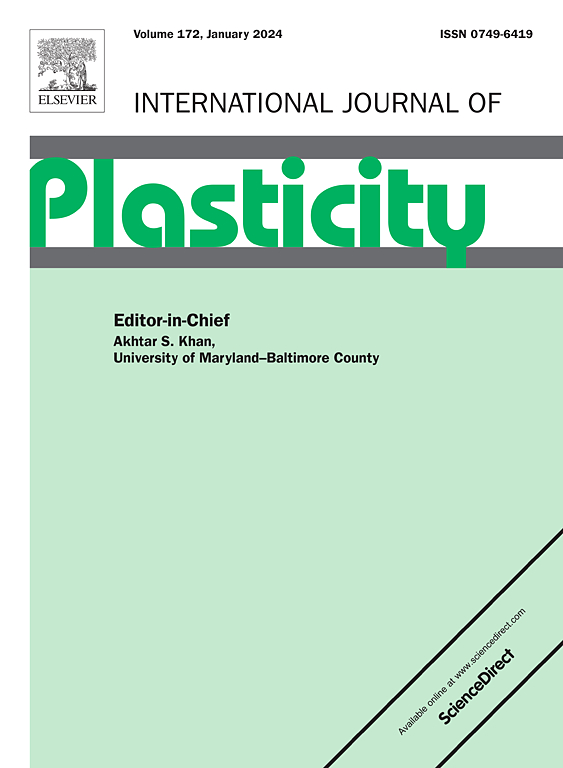A comprehensive approach addressing the flow behavior and the critical strain for the initiation of serrations in Al-Mg alloys is developed in the present work. The basic premise of the approach is that the solute atmosphere influences the friction as well as the strain hardening component of the flow stress. The friction effect of the solute cloud is modeled by considering the interplay between the characteristic solute migration time and the dislocation waiting time according to the cross-core diffusion mechanism. The impact on strain hardening is modeled by considering the apparent strengthening of the forest dislocations because of formation of solute aggregates near the vicinity of dislocation junctions. The apparent forest strengthening effect scales as the square root of the ratio of solute concentration in vicinity of the dislocation junctions and the bulk solute concentration. The modified constitutive model is validated against experimental flow curves obtained for strain rates varying over several orders of magnitude. It was observed that the modified constitutive model outperforms the standard constitutive model (considers only the friction effect of solute atmosphere) in predicting the flow curves in the dynamic strain aging domain. Furthermore, the modified constitutive model also accurately predicts the critical strain for the initiation of the jerky flow in both the normal and inverse regimes of the critical strain versus strain rate curve. Additional validation of the modified constitutive model is provided by dislocation character and density measurements via X-ray diffractograms, dislocation structure investigation via transmission electron microscopy along with fracture surface analysis.



